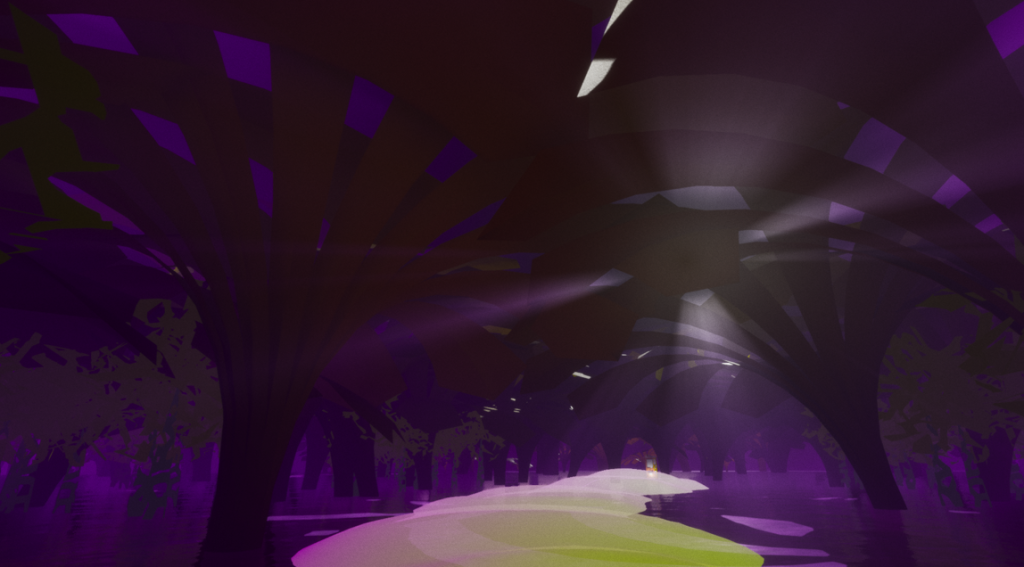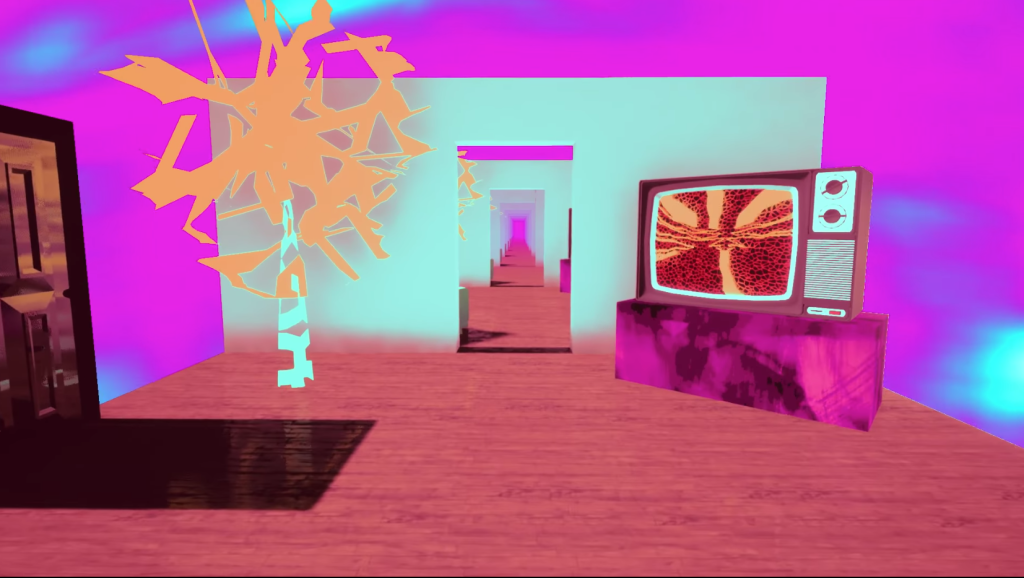LAVALAMP is a unique 3D first-person walking simulator that immediately stands out for its vivid, psychedelic visuals and eccentric storytelling. The game invites players into a surreal world where exploration and ambiance take center stage, weaving a narrative around the quirky mission of helping space lemmings. Developed primarily by Gabriel Ledoux, a music composer turned game developer, LAVALAMP offers a fresh take on the walking simulator genre, blending minimalist mechanics with an explosion of color and sound.
The experience is intentionally offbeat and whimsical, with each room in the game serving as a portal to a new, vibrant dimension. The story is deceptively simple-helping lemmings from space-but the journey is filled with unexpected perspectives, playful interactions, and a soundtrack that elevates the entire adventure. LAVALAMP is a testament to the creative freedom found in indie game development, where limitations can become the foundation for originality and charm.

Interview with Gabriel Ledoux
Q: Who are the team members behind LAVALAMP?
A: The game was mostly all done by myself, Gabriel Ledoux. I did get help from Thomas Duret for the scenario, and Sarah Albu and David Cronkite for the voice acting. Catherine Côté-Moïsescu helped me with social media.
Q: Can you share the story behind the development?
A: I’m actually a music composer first. I studied music composition and have been freelancing ever since, working on contemporary classical music, dance, short films, and sound installations. My first real experience with game engines was when a friend asked me to compose music for his VR art project. Seeing him work in Unity inspired me to try it myself. Later, during the COVID pandemic, I started experimenting with Unreal Engine, especially with shaders and post-process effects, which became the visual foundation for LAVALAMP.
Q: What were the biggest challenges you faced during development?
A: My biggest challenge was also my greatest strength: I was a beginner. I learned programming as I created the visuals. Not knowing much about optimization, I kept the 3D models very low poly and textures small, making sure the game would run on most computers. This limitation actually shaped the game’s visual style. I may have gone a bit overboard with blur and fog effects, though.
Q: Tell us about the game itself.
A: LAVALAMP is a psychedelic walking simulator. I love the genre, and since these games rely heavily on ambiance and music with minimal mechanics, it felt like something I could tackle solo. Many walking simulators focus on real-life themes or sadness, but I wanted to create something wild and otherworldly. The story, while childish and crazy, has depth-it’s about friendship, self-care, and, amusingly, breakfast. You really should eat breakfast!
Q: Any interesting anecdotes from the development process?
A: It’s been a wild ride. I was terrified to release the game, having poured my heart into it, and worried people might find it boring or bad. But there’s a passionate community of walking simulator fans out there! Reading reviews from all over the world has been surreal. It’s funny-bad reviews say “I didn’t understand what I just played,” and good reviews say the same! For me, weirdness is entertaining.
Q: Anything else you’d like to share with our readers?
A: I’m working on the sequel to LAVALAMP!

My Impressions of LAVALAMP
Gabriel Ledoux’s originality shines through every aspect of LAVALAMP. From the first moments, I was drawn into a psychedelic world bursting with color, where each new perspective-sometimes through a mirror, sometimes as an inanimate object-offers a surprising and delightful twist. The game’s first-person controls are intuitive: walk, look around, run, jump, and interact with objects. This simplicity allows the player to focus on the immersive visuals and ambient soundtrack.
The experience is linear, but there’s room for interaction with various objects in each location. A heart icon indicates critical items for progression, visible from any distance as long as you have a clear line of sight, while other interactive objects only reveal themselves up close. The core objective is to traverse the house, exploring different rooms, each transporting you to a distinct world with its own vibrant palette and atmosphere. The narrative is short and sweet: you’re on a mission to help space lemmings. I loved how this playful premise anchors the entire adventure, making each bizarre, colorful detour feel purposeful and cohesive.
LAVALAMP immediately caught my attention-who doesn’t love lava lamps? The music is outstanding, enhancing the experience and drawing you deeper into the game’s surreal universe. The tasks are straightforward, and the humor in the game’s theme made me laugh more than most games I’ve played. The visuals are simply stunning, creating an unforgettable atmosphere. However, it’s important to note that the intense visual effects may not be suitable for players with epilepsy.
Steam Page
You can free experience LAVALAMP for yourself on Steam:
https://store.steampowered.com/app/1461130/LAVALAMP/1
Conclusion
LAVALAMP is a celebration of creative freedom in indie game development. Gabriel Ledoux’s journey from music composition to game creation is reflected in every aspect of the game, from its evocative soundtrack to its imaginative visuals. While its mechanics are simple, the game’s heart lies in its atmosphere, humor, and willingness to embrace the weird. Whether you’re a fan of walking simulators or simply looking for something refreshingly different, LAVALAMP is a vibrant, memorable adventure worth exploring.